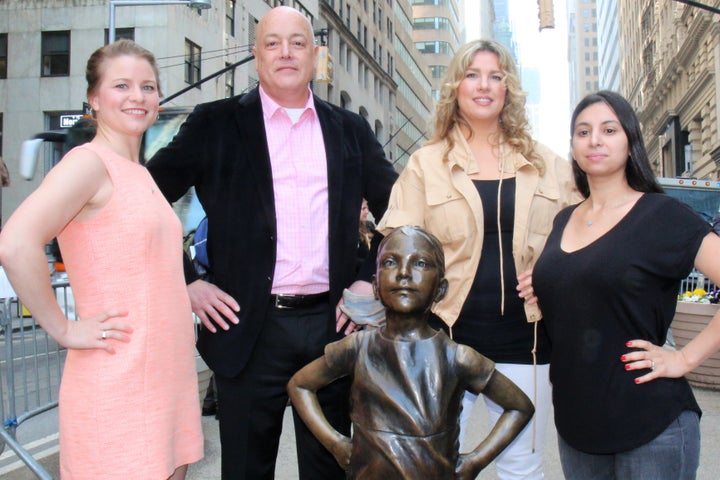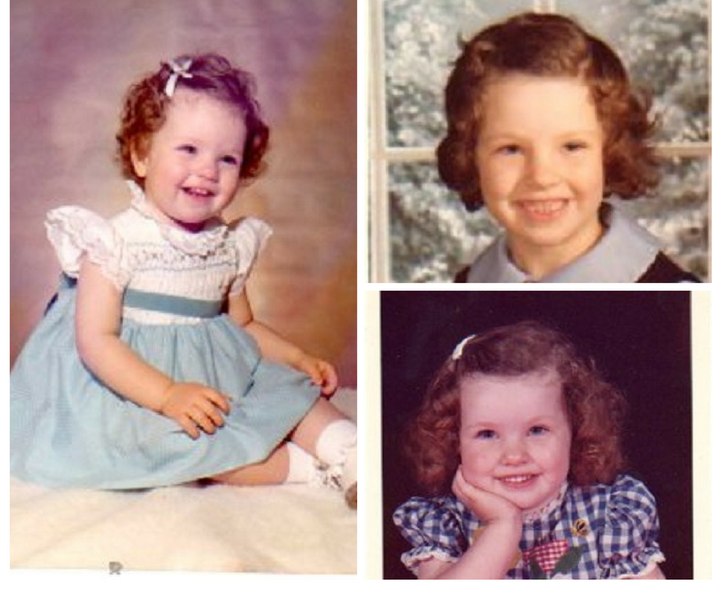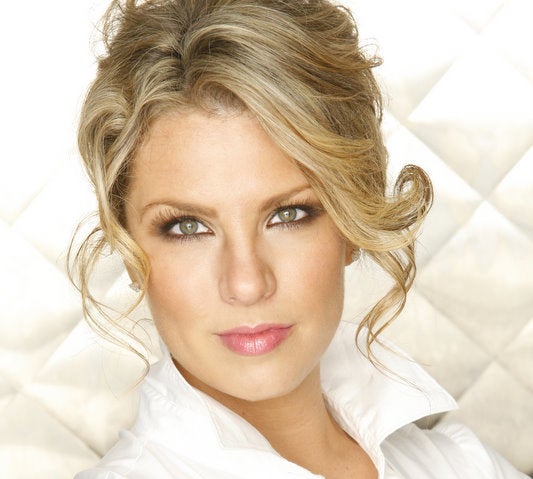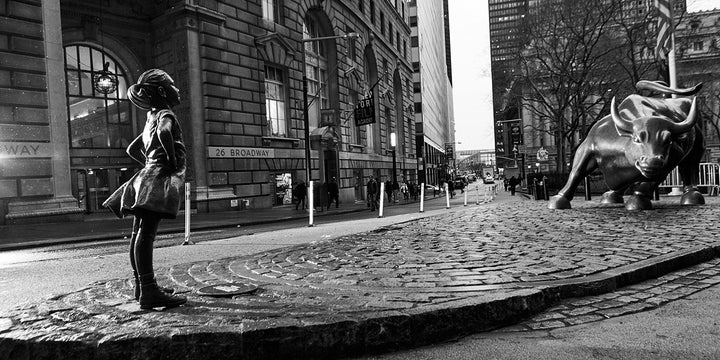
(left to right) Survivors of childhood sexual abuse, Bridie Farrell, Steve Jimenez, Amy Granberg and Ana Wagner strike their power poses with the Fearless Girl statue.
“Everyone get out! That’s it!” Those were the words that Amy Granberg’s husband yelled at her family after the birth of their first son. Seeing his wife had become distressed, Amy’s husband demanded her family leave and let her rest.
Amy was livid. What was supposed to be the happiest day of her life turned out to be a nightmare. Her then 8-year-old niece had come to visit Amy at the hospital to meet her new infant cousin. Amy says she noticed something was very odd with the interaction between her father and her niece, an uncomfortable dynamic that somehow seemed familiar.
In processing the moment, horrible flashbacks began to emerge: Amy alleges that her father, a retired Federal Marshall, had molested her on Easter when she was a young girl. She remembers the “big poofy dress” because she loved to show it off. She remembers sitting on his lap. She even remembers that it happened at her aunt’s house right out in the open, in front of company.

Pictured, Amy Granberg, from ages 20 months to age five. “These are the ages where I believe my sexual abuse took place,” Says Amy.
I was able to have lunch with Amy on a warm Friday afternoon on April 28th, of this year. This was mere minutes after she attended a press conference at the Fearless Girl statue in lower Manhattan to demand that New York lawmakers pass the Child Victims Act (CVA).
In New York, most survivors have only until the age of 23 to come forward and file charges against their abuser. After that, the opportunity is forever lost. Justice denied. The CVA would eliminate the civil and criminal statute of limitations, creating a one-year retroactive civil “window” for survivors over the age of 23, like Amy.
At 5’10’, Amy has a certain powerful presence about her. But as our conversation progressed, it became clear that it was the deep-rooted pain from within that fueled her power. In her words, “I’m angry. But I want to channel that anger into advocacy.” ( In 2013, Amy told her story and testified at a New York State Assembly Public Hearing on the statute of limitations applicable to sexual abuse against minors.)
“Daddy did something to her!” Amy recalls the heartbreaking words of her sister (who she alleges was also abused by her father) as she entered Amy’s house in a panic.
While Amy felt rage, she also felt “validated.” For so long, she says her parents had told her she remembered wrong, that it was just her brother. “I wanted to believe it was my evil brother [who Amy alleges also did abuse her], not my daddy. So I lied to myself and doubted my own memories… maybe I was crazy? I only came forward when I realized I wasn’t crazy because my father had now abused my little niece who paid the price for everyone's denial,” she tells me.
Amy says the family tried to protect her niece on their own, without notifying authorities. “Everyone is all for locking up and prosecuting [abusers], until they are your uncle or cousin.” It then becomes even more complicated. “What if I told you that if you reported, you would become homeless? What would you do? That was the choice my family faced because he owned my sister’s house. He owned my brother’s house. Everything would be disrupted.’”
Amy chose to report, but says the allegations couldn’t be substantiated and there was no physical evidence. Amy maintains that her family wouldn’t cooperate with the investigation and were in denial. She says that when her family told her to leave the issue alone, she had a gut-wrenching reaction and rushed to reach out for help:
“Picture it…my family tells me I can’t do anything about it. Eat it. Now I am having panic attacks and flashbacks. Now imagine trying to call different psychiatrists? They are like, ‘What’s your insurance? And I am yelling, ‘THIS IS AN EMERGENCY!’ I even call the hospital and they are like, ‘Do you have thoughts of suicide?’ and I’m like NO! ‘Do you want to kill yourself?’ and I’m like NO! I just yell and say, ‘I’ve been traumatized!’ And so someone at the hospital says, ‘so you need to call a trauma unit!’ and I am like, ‘What the heck is that?’”

Amy, from Staten Island, is a mother of two young boys and professional speaker.
Amy reached out to a friend who she knew was a domestic violence survivor who encouraged her to call Safe Horizon, a victim assistance organization. Amy was hesitant to reach out. “Is it going to be some type of counseling on the phone, talking me off the ledge?”
But her friend assured, “No, no they are amazing! I’ve heard great things about Safe Horizon. There is one on Staten Island I think.”
Still unconvinced, Amy quipped, “If the girl at the desk is snotty, I am going to lose it.”
Her friend snaps back, “So email them!”
Amy sent an email that changed her life.
Ten minutes after pressing send, then-case manager Amy Edelstein called her back. As she recounts this call to me, her voice cracks and tears well up in her eyes. “She said the only thing that no one else did. Everyone was offending me, and she was the only one that didn’t, she said… ‘I am so sorry that happened to you.’”
"I am so sorry that happened to you." Words that any survivor longs to hear but rarely does in a society that is plagued with victim blaming attitudes and ideology.
Finally connected to trauma-informed and expert help, Amy thought justice was right around the corner. After years of being told her memories were false, that she was dramatic—and being intimidated into silence—she was ready to report her childhood sexual abuse.
She recalls, “So, how does this go? What do I do? Do the police come to my house? Do I have to go make a report? Do you send me into a different area? And then Mrs. Edelstein tells me, ‘No, Amy,” and I said ‘What do you mean?’ She was like, ‘Well, I just want you to prepare yourself, there are other avenues you can get your voice out, but when it comes to legally prosecuting your father, the statute is up.’”
Amy had no idea. She felt the law was unjustly punishing her for not coming forward sooner.

The Fearless Girl statue has become a symbol of courage and strength.
Finishing up our lunch, Amy and I talk about what it meant to stand by the Fearless Girl statue earlier in the day with other adult survivors of childhood sexual abuse. “She’s supposed to be fearless and I love that. But as victims and survivors, we’re still afraid. But fearlessness is being terrified and speaking out anyway.
“I also think this represents going up against a huge unjust system, of a little girl standing up to a male dominated system.
"But she's coming forward. It’s quite courageous.”
For the past 10 years, Safe Horizon and other advocates have been working tirelessly for an actual vote on the Child Victims Act.
Michael Polenberg, Vice President of Government Affairs at Safe Horizon has been at the helm of these efforts since the beginning and is now delivering an ultimatum; “Amy is an example of courage. It’s time for the governor to follow her lead and survivors like her, and show lawmakers what true courage looks like and finally get this done. We need to send a clear message: ‘Stand with children, or stand with those who harm them.'"
Before ending our lunch, I asked Amy one last question. “If New York finally passes the Child Victims Act this session, what would you do?”
She responds: “…No matter what happens, I want that day in court.”
As I head back to work after our lunch, I can't help but silently give that fearless girl statue a name:
Amy.
Visit www.nypasscva.com to learn about advocacy efforts to pass the NY Child Victims Act and how you can get involved.
Some signs of child sex abuse can include a demonstration of sexual knowledge, curiosity, or behavior beyond his/her age, isolation, or having pain in the genital or anal areas. If you suspect abuse, call the New York State Central Registry of Child Abuse and Maltreatment at 800.342.3720.
